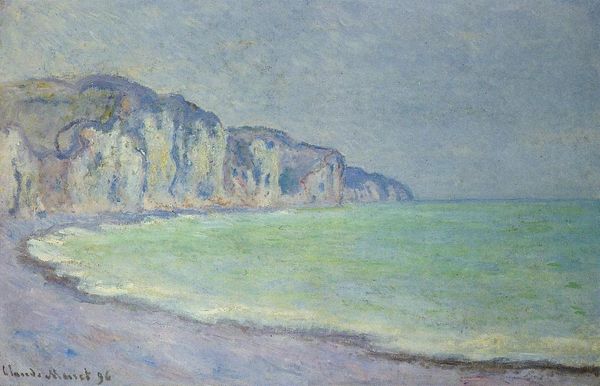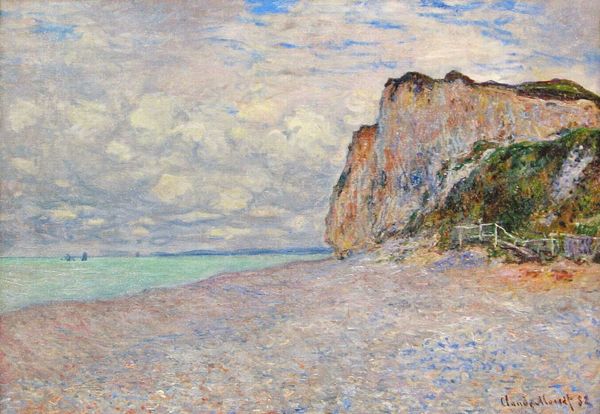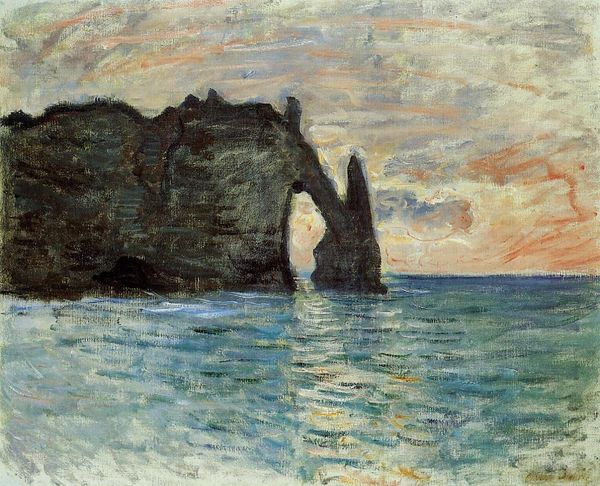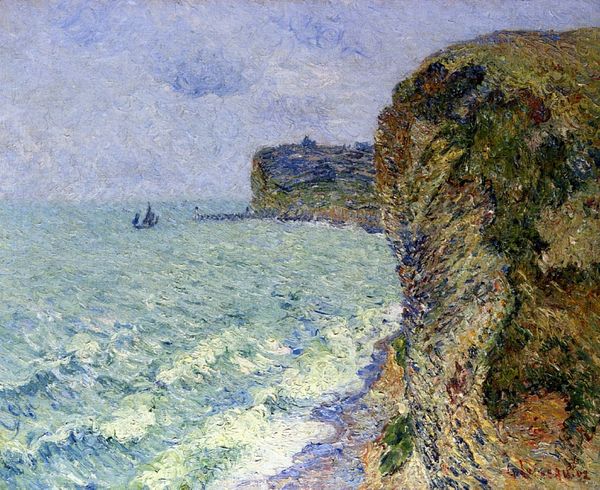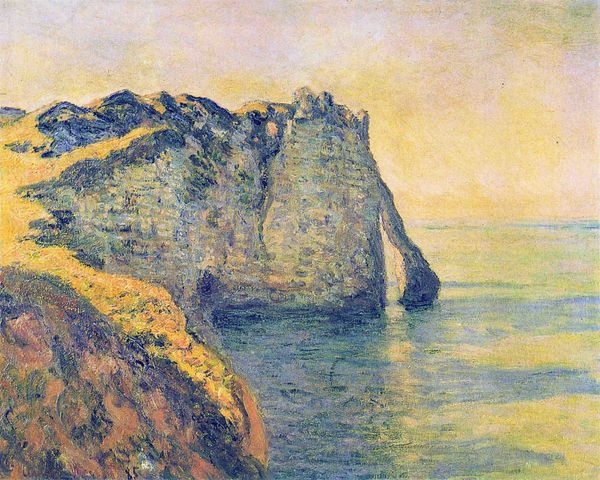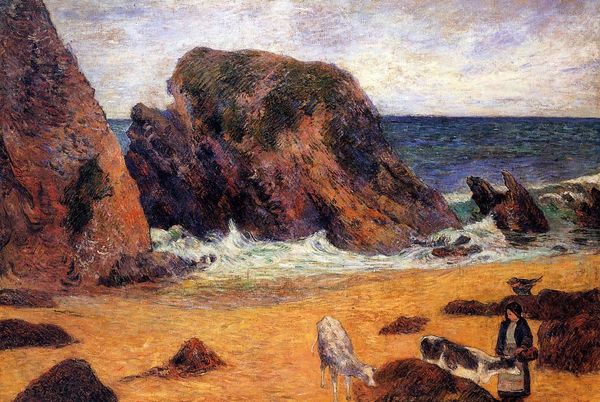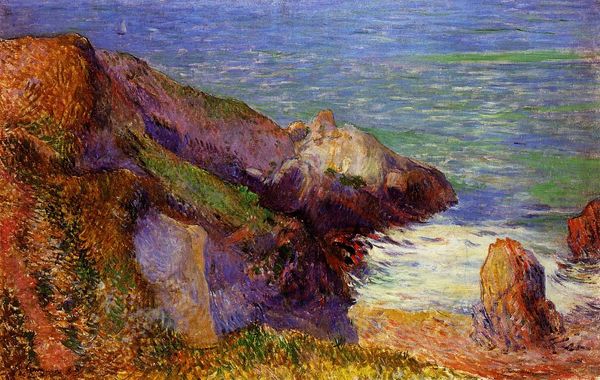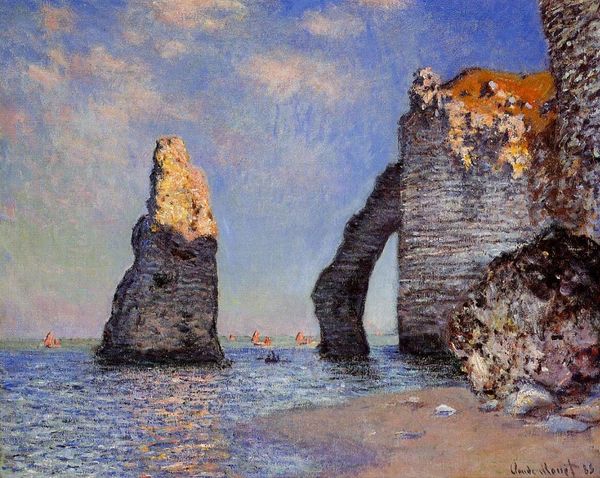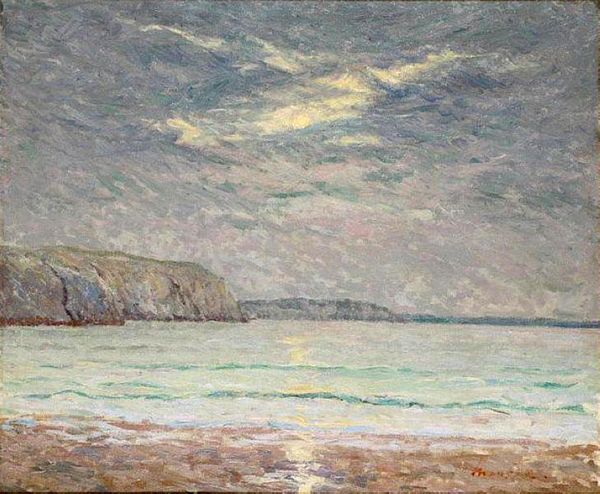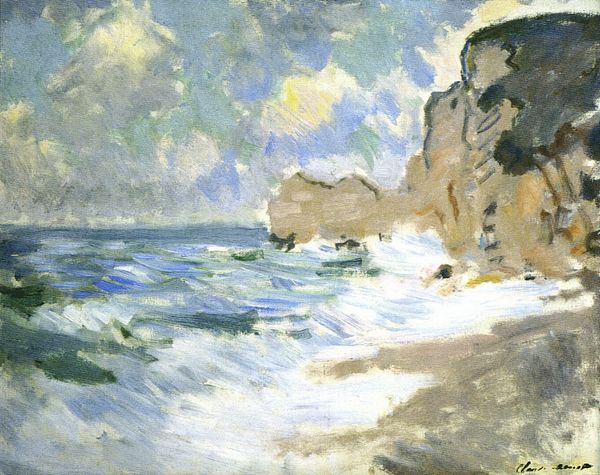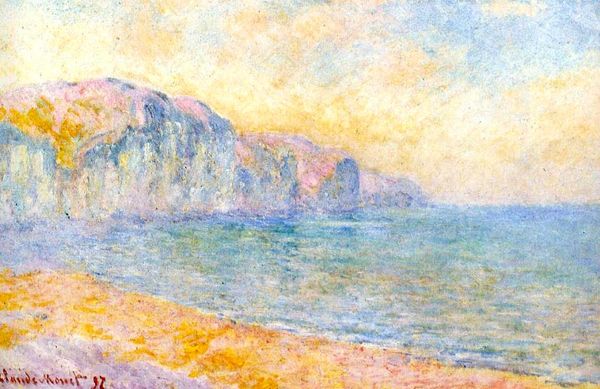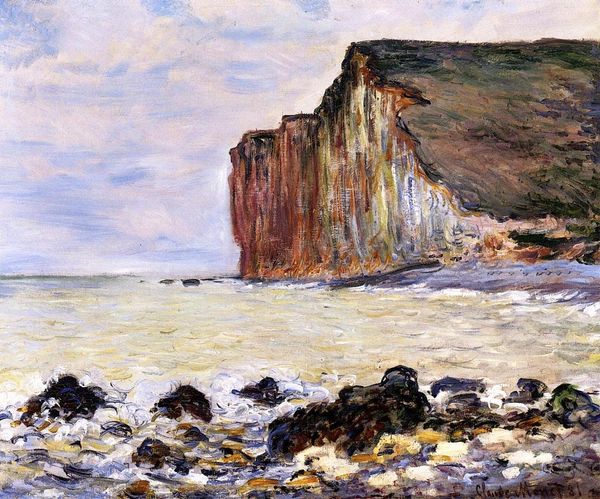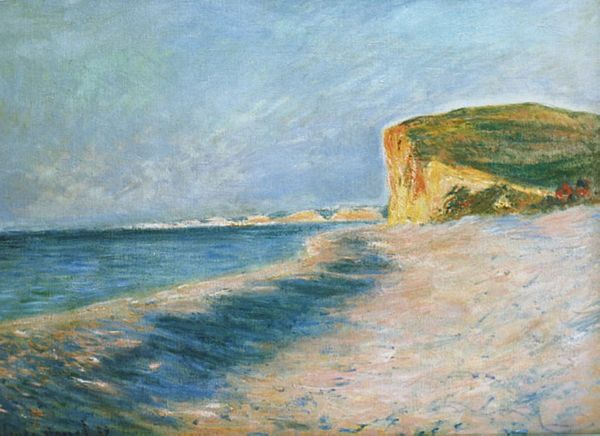
painting, plein-air, oil-paint
#
cliff
#
painting
#
impressionism
#
plein-air
#
oil-paint
#
landscape
#
impressionist landscape
#
oil painting
#
rock
#
seascape
#
natural-landscape
#
post-impressionism
#
naturalism
#
sea
Copyright: Public domain
Editor: Claude Monet's "The Manneport, Etretat, the Porte d'Aval" from 1885, painted with oils, offers such a peaceful vista. What I find captivating is how he layers the paint, building texture and depth to capture the cliff's monumental presence. What stands out to you about it? Curator: The means of production speak volumes here. Think about Monet's process – *en plein air*. He wasn't just observing nature; he was working under specific conditions, confronting the fleeting light and changing tides. This labor becomes part of the work itself. What impact did these plein-air practices have on his technique? Editor: It looks like it influenced him to try and capture that fleeting moment. The brushstrokes feel so spontaneous! Do you think the location, Etretat, was a key factor, given its industrial presence as a port? Curator: Absolutely. Consider the socio-economic context. Etretat wasn’t just a pretty landscape; it was a site of resource extraction and labor. Fishing, trade, even early forms of tourism. Monet, though seemingly capturing the beauty of nature, couldn’t escape portraying a space sculpted by human activities and materials. Where do you see evidence of that interaction between industry and art in his approach to the scene? Editor: I guess, he doesn't ignore its existence but focuses on capturing the overall image of the cliff. This gives him that unique Impressionist style he's famous for! Curator: Exactly, and that artistic choice in itself has material implications – how does the availability of paints, canvases, and transport shape this ‘instantaneous’ impression? Reflecting on that interaction between the scene's materiality and Monet's painting choices allows a deeper engagement with art history itself. Editor: That's definitely given me a different way to think about Monet and Impressionism in general. The labor, resources, and social forces, are all embedded in the painting itself. Curator: Precisely. We’ve seen how even an idyllic landscape is entangled in material processes, challenging that pure nature aesthetic.
Comments
No comments
Be the first to comment and join the conversation on the ultimate creative platform.
